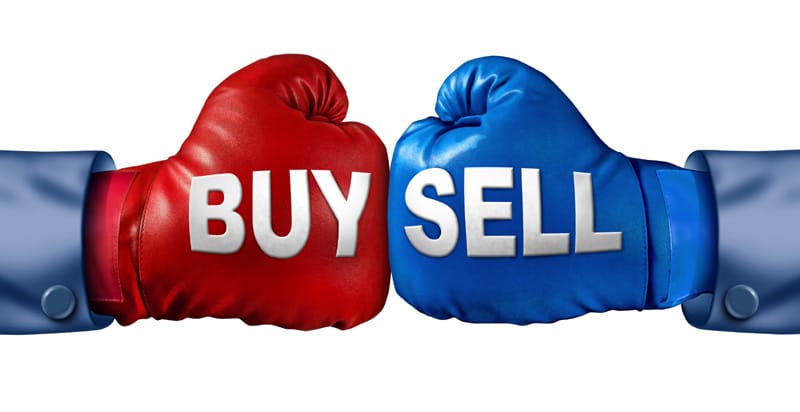Forex Trading Basics: How Does A Trade Work?
When trading Forex, all transactions are made involving currency pairs. While you may enter a buy or sell position whenever you trade any Forex currency pair, essentially what you are doing is buying one pair and selling another. The goal is to exchange one currency for another in the expectation that the market rate or price will change so that the currency you bought increases in value against the one you sold. For example, suppose you wanted to open a trade position to buy the EUR/USD. What you are actually doing is buying the Euro and exchanging, or selling, the US Dollar. Your goal is that the Euro will increase in value, and the US Dollar will decrease in value.
These are the most commonly traded currency pairs, referred to as the Forex Majors. Most of these pairs involve the greenback, or US Dollar, but not all of them. We provide Forex Signals for all of these pairs:
- EUR/USD
- GBP/USD
- USD/CHF
- USD/CAD
- AUD/USD
- USD/JPY
- EUR/JPY
Going Long
Forex traders use the idiom “going long” or “going short” to indicate the direction of the trade. A long position is when you buy a currency at one price and aims to sell it later at a higher price. In this scenario, the investor benefits from a rising market. For example, let us compare it to real-estate. Imagine if you wanted to buy a house. Interest rates are low and the cost of purchasing a house is cheap, but you believe the housing market is on the verge of a boom. So you buy a house at a cheap price, and hold on to the house. Your goal is to see the value of the house increase. Then, you may decide to sell the house once it increases in value.
The same goes with a Forex long position. For example, lets say you believe the Greenback will increase in value against the Swissy. So you “go long,” or buy lots of the USD/CHF and once you’ve made a reasonable profit or your desired profit point, you close the trade, or “sell off’ the position.
Going Short
A short position is when a trader sells a currency in anticipation that it will depreciate.In this scenario, the investor benefits from a falling market. For example, let us compare it to real-estate. Imagine if you wanted to sell your house. You believe that the housing market is going to plunge, and you want to cash in on your equity. So you sell your house at a high price. Your goal is to see the value of the house decrease.. Then you decide to buy the house back once it has dropped in value. So now you made a profit on the sale of the house, and you once again own the house.
The same with a Forex short position. You want to see the position decrease in value, and once you’ve made a reasonable profit or your desired profit point, you close the trade or “buy out” the position. For example, lets say you believe the Cable will decrease in value against the Greenback. So you “go short,” or sell lots of the GBP/USD and once you’ve made a reasonable profit or your desired profit point, you close the trade, or “buy off’ the position.
Picking the Right Direction
Of course in the housing market, you buy the house with the intention and hope that the house will increase in value. If you’re wrong, you could be sitting on top of negative equity, and that is no fun. Or you may think you are selling the house at a great price, only to find out you should have waited and you could have sold it at an even better price and you ended up losing money on the sale.
The same with Forex trading, your goal is to go long or go short at the best possible prices, with the goal that you picked the right direction and eventually can close the trade with a profit. Our ForexSignal Trading Desk works hard to provide the best possible trade signals so that you can buy and sell at crucial and pivotal prices. If you are worried that you may not get the signal in time to place the trade at the right price, we also offer automated trading with our Forex Trade Copier so you can participate without having to do any work.
Ability to Profit in Both Bull and Bear Markets
The beauty of being able to “go long” or “go short” when trading Forex is that profit potentials exist in both bull and bear markets. Actually, to be accurate, since currency trading always involves buying one currency and selling another, there is always potential to make money in either direction and technically, there is no bear market.
In fact, every time you are short one currency, you are also long another. For example, if you sell 5 lots of EUR/USD. This means that you are short the Euro, but you are going long the US Dollar.
That means that regardless of whether a market is upward or downward trending, you have potential to profit. The important thing is that you know how to manage your risk.






Leave a Reply
You must be logged in to post a comment.